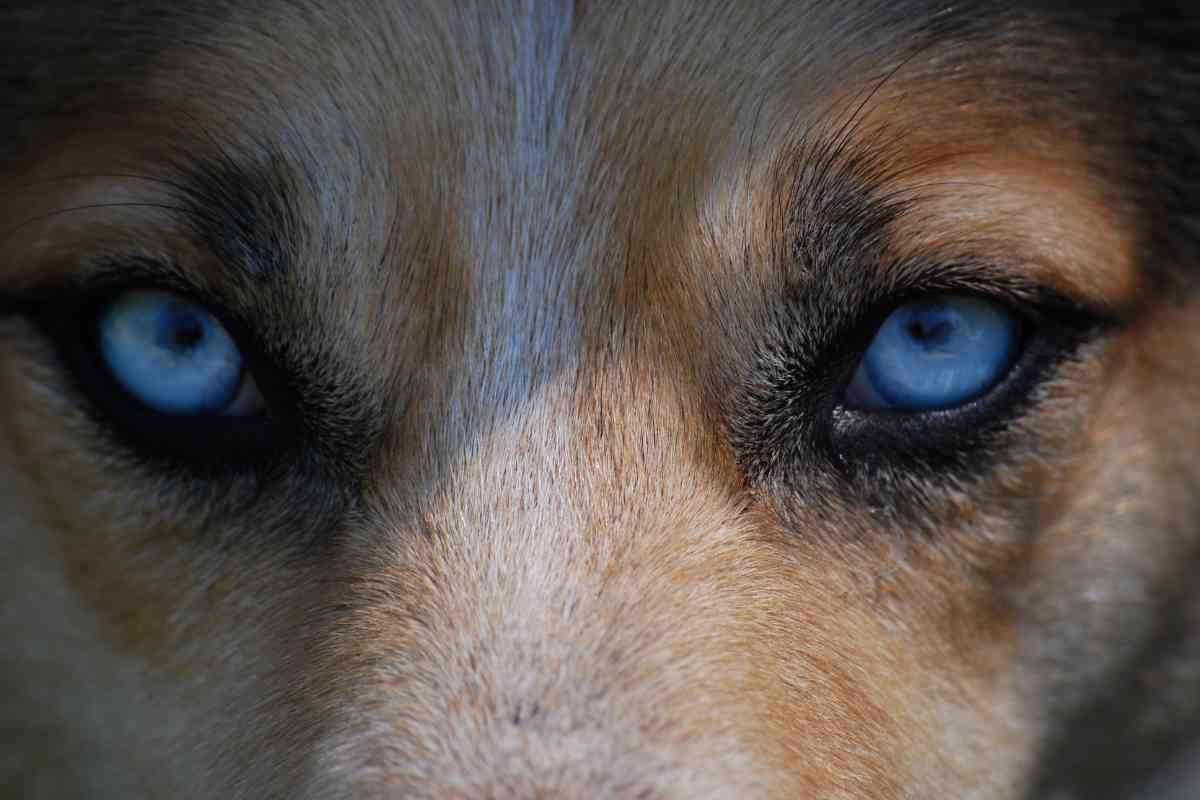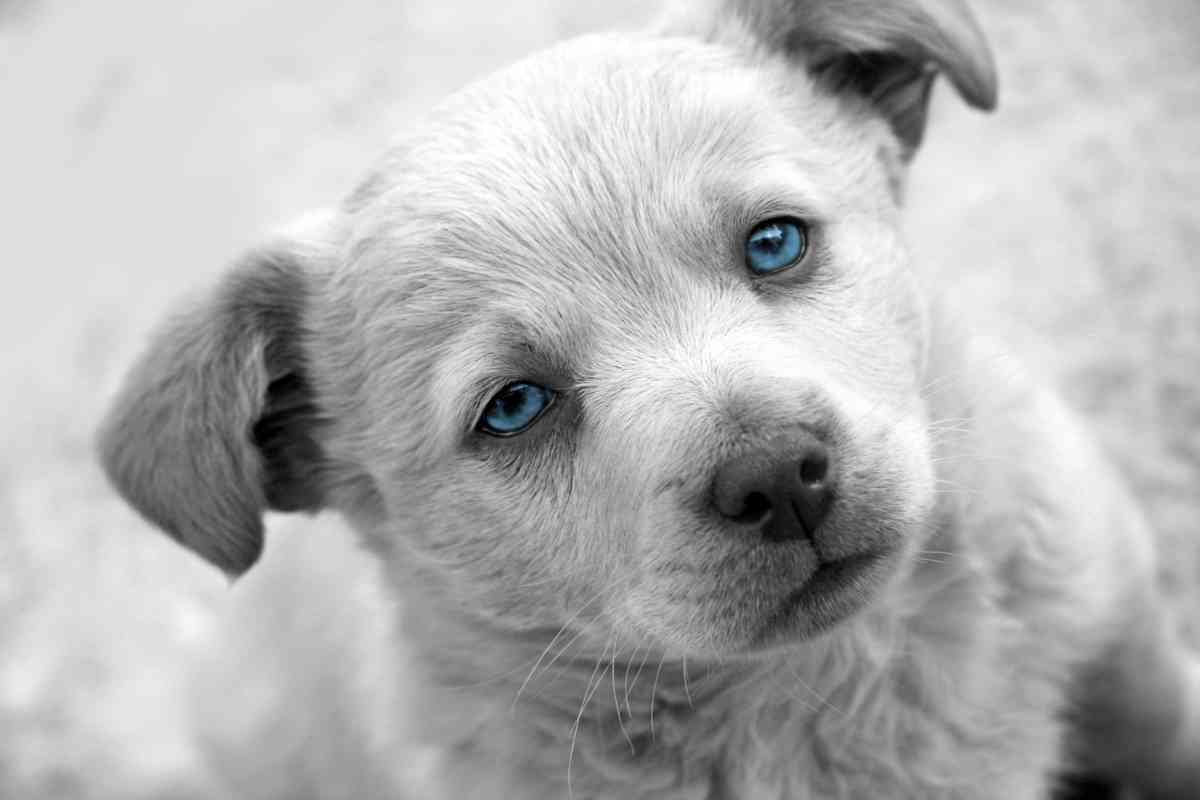Blue Eyed Labradors: Everything You Need To Know
Labrador retrievers are among the most common dog breeds pet owners keep. When choosing a Labrador, you look at eye color, coat, size, and intelligence.
Can a Labrador Retriever Have Blue Eyes?
It’s rare to find an adult Labrador retriever with blue eyes. If you have come across one, maybe they are not a pure breed, or the dog has a genetic disorder. There are a few cases in which dogs can have blue eyes, but none occur naturally in Labrador Retrievers.
We have experience as pet owners and consulted other breeders on whether a Labrador retriever can have blue eyes. Feedback from Lab breeders and our observations make us believe it’s rare to have blue-eyed Labradors. Sometimes genetics may go haywire, and a Labrador retriever with blue eyes is born.

What Colors Does Labrador Retriever Wear?
The Labrador breed mainly has brown(also known as chocolate or liver), yellow, and black coats. Chocolate is the least common of the three coats.
Do you recall ever seeing a blue-eyed brown Lab? The possibility is rare since chocolate Labs can’t have blue eyes.
Labradors’ eye color falls into two main categories: hazel and brown. Depending on the breed standard, yellow and black labs’ eyes are brown, and chocolate labs’ have hazel or brown eyes.
It’s natural to have eye color variation among dogs. Hazel eyes may have varying proportions of amber, brown, and green colors. Brown eyes can be a shade of dark espresso to brighter sepia. It’s also possible to see a chocolate Lab with green eyes.
Two Lab breeds spot green eyes, which include:-
- One is the breed from America known as the American Chocolate Brown Labrador.
- A breed from England known as English Labrador.
Can A Labrador Retriever Have Blue Eyes In Adulthood?
Blue eyes aren’t due to pigmentation in a dog’s eye. Labrador retrievers have only one pigment in their eyes: either brown or red.
As the eyes absorb light, the concentration of melanin determines their color.
The high volume of melanin makes the eyes brown, and the low concentration makes the light distribute around the iris tissues, making the eyes look blue.
The varying melanin concentration between low and high makes the eyes have a green, gray, yellow or amber color.
All puppies have blue eyes during birth and infancy, but the color changes to adult permanent eye color. Not many people notice this unless you are an owner who closely observes your puppies.
If they start changing eye color to blue in their adulthood, consult a vet to rule out medical conditions.
Why Are Puppies Born With Blue Eyes?
Although it’s not easy to observe puppies’ eyes at birth, in the first few days, the eyes remain closed. When a puppy opens their eyes, you may see adorable blue eyes.
owever, that eye color doesn’t last until adulthood, so take those photos while you can to treasure them in the future.
During birth, a puppy’s body and eyes are still developing. As the eyes receive the light, they appear bluish due to a lack of melanin which the puppies start developing from week nine.
When Do Puppies Start Changing Their Eye Color?
Newborn puppies’ eyes remain closed and will open up as the days go by, so you can’t see their eye color the first few days. After the puppies open their eyes, look at their adorable eyes and know they are blue.
As they grow, the puppies’ eyes will change color from week nine to week twelve. The puppy’s eyes then achieve the color that remains until adulthood.
What Makes Some Dogs Have Blue Eyes?
Dogs can have blue eyes as a result of four natural phenomena which are rare in pure Labrador retriever breeds.
Dogs with ALX4 Blue Eye Gene
Dogs with the blue eye gene called ALX4, which determines the concentration of eye pigment independently from the gene determining their skin color, can have blue eyes. A good example is the huskies breed which is known to carry the gene.
Merle Gene
Blue eyes are familiar among dogs with merle coat coloring. The merle gene gives a dog a coat of diluted pigment and blue eyes. Great Danes and Australian Shepherds are good examples of breeds that may be blue-eyed due to the merle gene.
Albinism
The albinism genetic condition prevents the formation of pigments in the whole body. Albino dogs, whichever breed will have a white coat, and their eyes can either be pink or blue.
Albinism in dogs leads to medical complications, and the breeding of albino dogs is discouraged and avoided.

White spotting gene
The White Spotting gene makes a dog have white patches on some parts or the whole body.
A white patch on the eyes may cause the irises to lack pigmentation, and your fluffy friend can have blue eyes.
Are There Medical Reasons That Can Make A Labrador Retriever Have Blue Eyes?
Can a Labrador retriever have blue eyes due to medical complications? Yes, two eye problems may make your dog’s eye appear blue.
If your labrador retriever’s eyes start changing to blue when they are mature, visit a vet for consultation and guidance.
Nuclear Sclerosis
Nuclear Sclerosis, aka Lenticular Sclerosis, is a natural aging process of the lens in the eye. It makes a dog’s eyes cloudy and has a hazy blue color.
As your dog ages, their eyes lens fiber compresses and hardens, becoming more visible. The process doesn’t make your dog blind, but the eyes’ visibility level reduces with age.
Nuclear Sclerosis is a painless, gradual natural process, and you can see the condition in dogs over six years.
Cataracts
Cataracts cause a much worse scenario and, without medical intervention, can lead to complete blindness.
They cause a white opaque layer that prevents light from entering the eye, causing blindness; sometimes, the eyes may appear blue.
A small number of cataracts can make your pet lose sight. You will notice your furry friend’s behavior change, like bumping into things or failing to see a treat right before them.
Some disease processes may cause cataracts, and your vet should conduct additional testing if there is suspicion of cataracts.
Although infrequent, cataracts can occur overnight. If your furry friend shows some rapid change in the eyes, it’s time to visit your vet.
Are There Dog Breeds That Have Blue Eyes Naturally?
Yes, we have some dog breeds whose eyes are naturally blue. They include:
- Husky
- German Shepherd
- Weimaraner.
- Shetland Sheepdog
- Australian Shepherd
- Dalmatian
- Dachshund
- Border Collie
Do Chocolate Labrador Have Blue Eyes?
Dog’s eyes and skin color depend on genetics. Chocolate labs are an example of poor genetics. A Labrador retriever having blue eyes is an excellent example of poor genetics.
However, this should not worry you because Chocolate Labs meet the standards of a typical Labrador breed.
Chocolate Labs also require the same standard of care, just like other Labradors.
Are There Blue-Eyed Chocolate Labrador Breeders?
Labrador breeders are many, but finding a specific coat color breeder can prove to be complicated.
You can search the internet to find the desired features of a labrador retriever.
Most dog owners may be looking for a Labrador retriever with blue eyes for several reasons such as to match with their own eye color.

Key Takeaways
- Very young Labrador puppies will seem to have blue eyes during the early stages of development due to a lack of melanin pigment in their eyes.
- It’s not common to see an adult Labrador retriever having blue eyes. The breed has brown, hazel, or yellow color in their eyes.
- Although there are claims of chocolate Labs with blue eyes, they may not be pure breeds in most cases. Such a Chocolate Labrador may be a mix of parents having merle genes which most breeders do not encourage.
- If you see your aging dog’s eyes turning color, it’s a normal aging process due to old age.
- Labrador having blue eyes is not possible naturally unless there are some genetic issues with the dog like albinism, merle gene white patches, and the blue eye gene (ALX4).

![Should Golden Retrievers Eat Large Breed Food? [Vet Explains!] 4 Should Golden Retrievers Eat Large Breed Food? [Vet Explains!]](https://retrieveradvice.com/wp-content/uploads/2022/02/Should-Golden-Retrievers-Eat-Large-Breed-Food-Vet-Explains-768x512.jpg)




